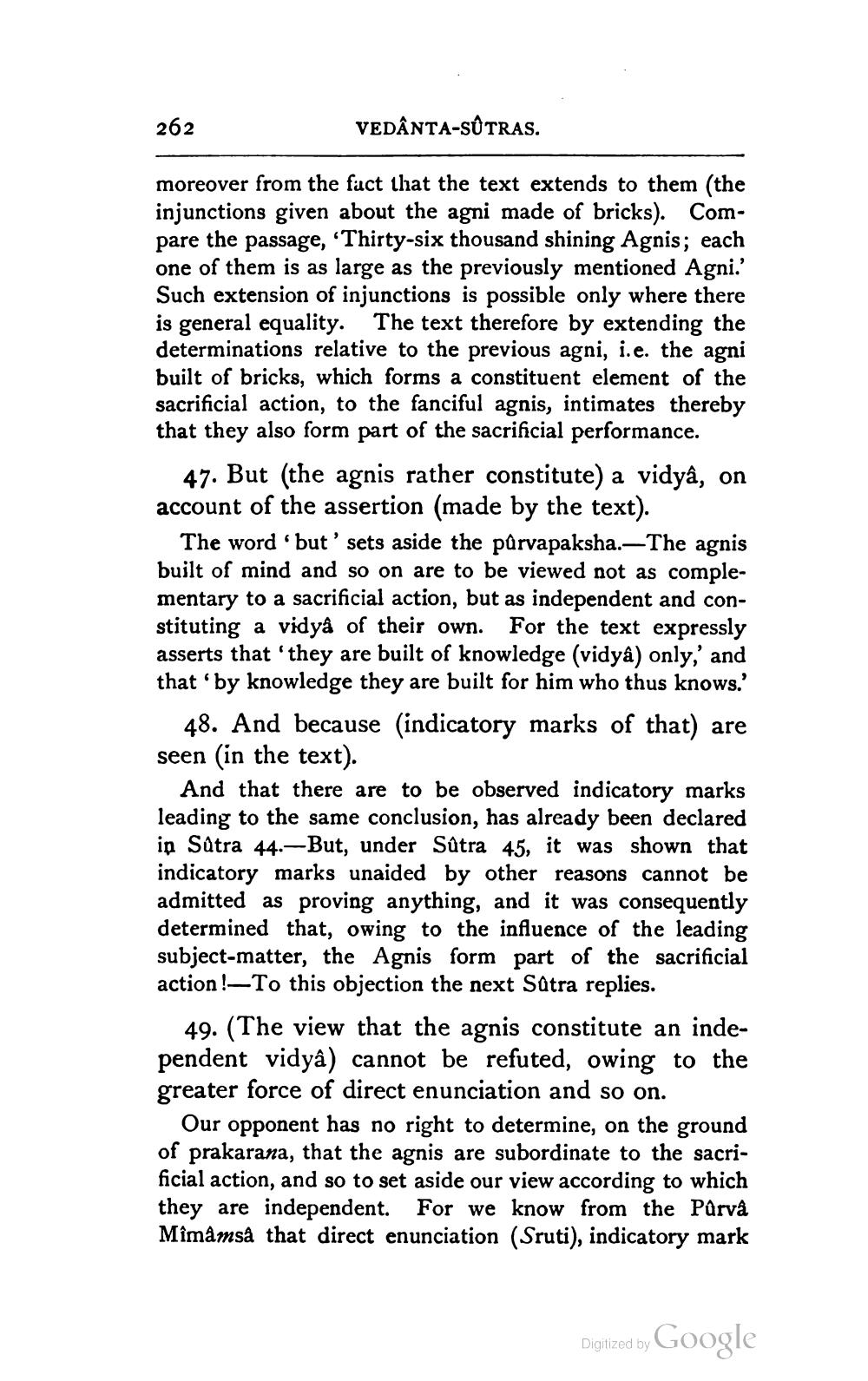________________
262
VEDÂNTA-SÚTRAS.
moreover from the fact that the text extends to them (the injunctions given about the agni made of bricks). Compare the passage, Thirty-six thousand shining Agnis; each one of them is as large as the previously mentioned Agni.? Such extension of injunctions is possible only where there is general equality. The text therefore by extending the determinations relative to the previous agni, i.e. the agni built of bricks, which forms a constituent element of the sacrificial action, to the fanciful agnis, intimates thereby that they also form part of the sacrificial performance.
47. But (the agnis rather constitute) a vidya, on account of the assertion (made by the text).
The word but' sets aside the pūrvapaksha.—The agnis built of mind and so on are to be viewed not as complementary to a sacrificial action, but as independent and constituting a vidyâ of their own. For the text expressly asserts that 'they are built of knowledge (vidya) only, and that by knowledge they are built for him who thus knows.'
48. And because indicatory marks of that) are seen (in the text).
And that there are to be observed indicatory marks leading to the same conclusion, has already been declared in Sätra 44.-But, under Sútra 45, it was shown that indicatory marks unaided by other reasons cannot be admitted as proving anything, and it was consequently determined that, owing to the influence of the leading subject-matter, the Agnis form part of the sacrificial action !—To this objection the next Satra replies.
49. (The view that the agnis constitute an independent vidya) cannot be refuted, owing to the greater force of direct enunciation and so on.
Our opponent has no right to determine, on the ground of prakarana, that the agnis are subordinate to the sacrificial action, and so to set aside our view according to which they are independent. For we know from the Parva Mîmamså that direct enunciation (Sruti), indicatory mark
Digitized by
Digilzed by Google




